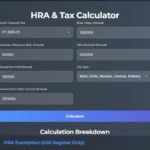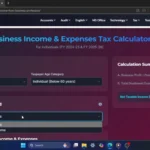|
*Item 7 -Reconciliation Statement For Company |
|||
|
Description |
PP |
NPP |
|
|
A |
Accounting Net profit or Loss (Excluding Income Tax Expenses) |
||
|
B |
Income reconciliation adjustments (H-L) |
||
|
H |
Add backs: Assessable income which are not shown in Books (E+F+G) |
||
|
E– Assessable balancing adjustment amounts on depreciating assets |
|||
|
F– Any excess of the tax value of closing stock over the tax value of opening stock (non-small business entities – see item 40 Closing stock) |
|||
|
G– Other assessable income not included in the Books |
|||
|
L |
Subtractions: Non assessable income which are shown in Books (I+J+K) |
||
|
I– Profit on the sale of depreciating assets shown in the books |
|||
|
J– Personal services income included in the assessable income of an individual (attributed amount) |
|||
|
K– Other income shown in the books which is not assessable for tax purposes For example: Exempted income |
|||
|
C |
Expense reconciliation adjustments (P-U) |
||
|
P |
Add backs: Expenses which are shown in the books but are not tax deductible (M+N+O) |
||
|
M- Depreciation charged in books |
|||
|
N- Loss on the sale of depreciating assets |
|||
|
O- Other items not allowable as a deduction:
|
|||
|
U |
Subtractions: Expense which are not shown in the books but are tax deductible (Q+R+S+T) |
||
|
Q– Depreciation charged as per Tax depreciation rules |
|||
|
R– Deductible balancing adjustments amount on depreciating assets |
|||
|
S– Any excess of the tax value of opening stock over the tax value of closing stock (non-small business entities: see item 40 Closing stock) |
|
||
|
T- Other tax-deductible items:
|
|||
|
D- Taxable Net income or loss from business (A+B+C) |
|||
|
Subtractions I- Profit on the sale of depreciating assets shown in the books (shown in Books) |
|
Add backs: E- Assessable balancing adjustment amounts on depreciating assets (not shown in Books) |
|
Example: Working out an assessable balancing adjustment amount, ignoring any GST impact Emil purchased a Fixed Asset that he held for two years and used wholly for a business purpose. Then he sold the Fixed Asset for $1,300. Fixed Asset adjustable value at the time of sales was $1,200. Adjustable value means Asset value as per Tax Schedule Assessable income as an assessable balancing adjustment amount on depreciating assets = Sale Value – Adjustable value = $1,300 – $1,200 = $100 |
|
Add backs: N- Loss on the sale of depreciating assets (shown in Books) |
|
Subtractions: R- Deductible balancing adjustments amount on depreciating assets (not shown in Books) |
|
Example: Working out a deductible balancing adjustment amount, ignoring any GST impact If Emil sold the Fixed Asset for $1,000, the termination value would be less than the adjustable value, adjustable value at the time of sales was $1,200. Adjustable value means Asset value as per Tax Schedule Deductible Expenses balancing adjustments amount on depreciating assets = Sale Value – Adjustable value = $1,000 -$1,200 =-$200 |










